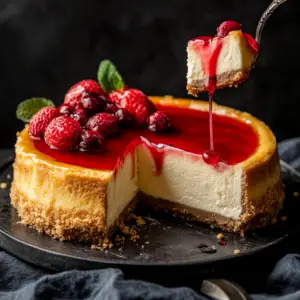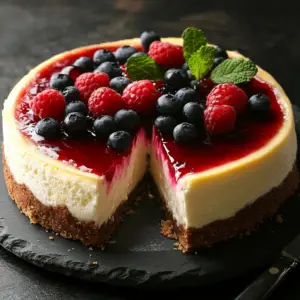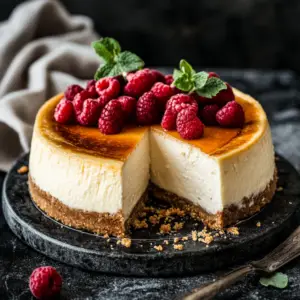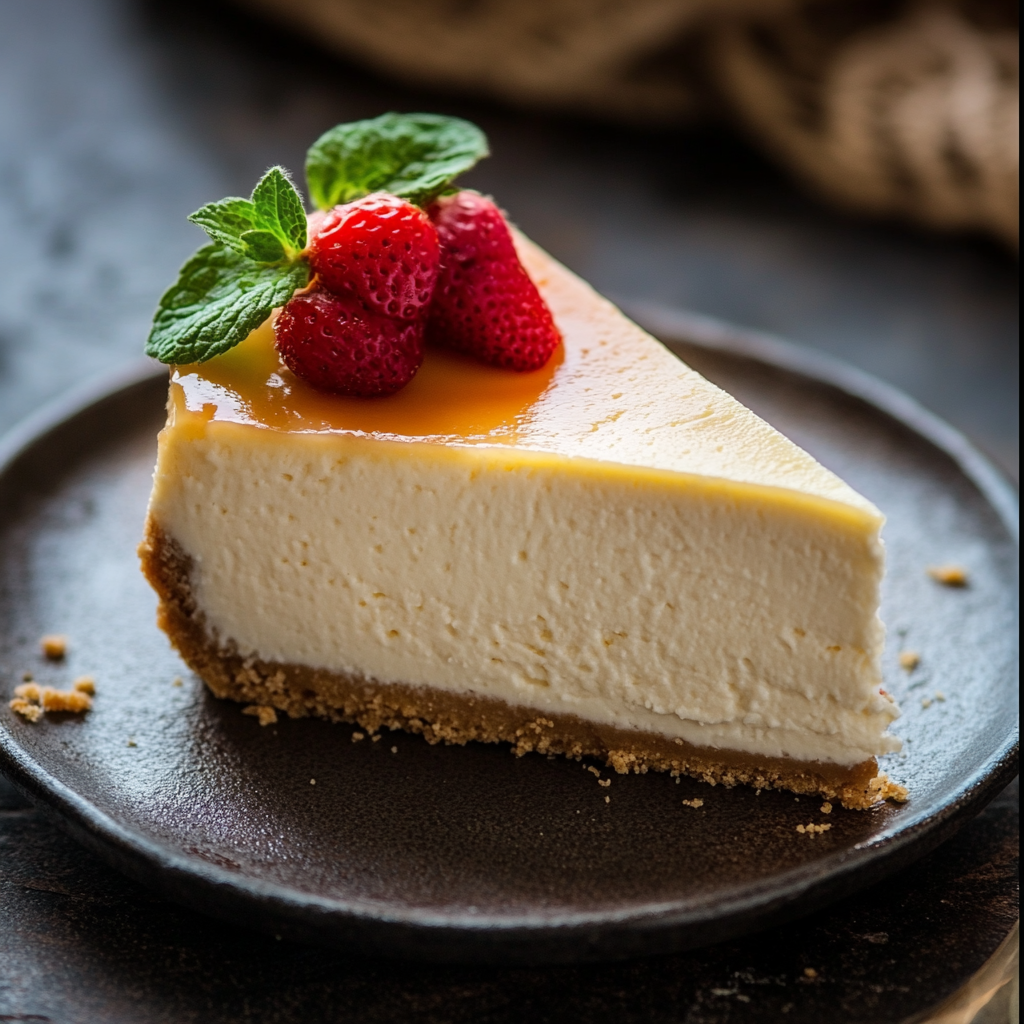Making the perfect cheesecake may seem like an elusive goal for many bakers, both novice and experienced. Whether you’re aiming for a creamy, rich, or smooth texture, the secret lies in mastering the right ingredients, technique, and baking methods. With so many varieties of cheesecake, from New York-style to no-bake, understanding the fundamentals will help you create a cheesecake that stands out. Let’s explore the secrets behind baking the best cheesecake—one that has the perfect balance of flavors and a texture that’s simply irresistible.
The Role of Ingredients in Cheesecake
The foundation of any great cheesecake is its ingredients. Each component plays a critical role in the texture, taste, and structure of the final product. To achieve the best cheesecake, it’s essential to pay attention to the quality and condition of these ingredients.
- Full-fat cream cheese: Using full-fat cream cheese is non-negotiable when it comes to making a rich and creamy cheesecake. Low-fat or reduced-fat varieties simply don’t offer the same luxurious texture.
- Room temperature ingredients: Every ingredient, especially cream cheese, eggs, and sour cream, should be at room temperature. Cold ingredients can result in a lumpy batter and uneven texture. By ensuring everything is at the same temperature, you allow the ingredients to blend seamlessly into a smooth, consistent mixture.
For tips on how to achieve the right consistency for your ingredients, Martha Stewart offers expert advice that will help you avoid common mistakes.
- Sour cream or heavy cream: Adding a small amount of sour cream or heavy cream gives the cheesecake a subtle tanginess and lightens the texture. This ensures that the cake isn’t too dense but still holds its creamy richness.
For a detailed breakdown of the role of each ingredient and step-by-step instructions, The Kitchn provides an excellent guide.
The Perfect Cheesecake Crust

While the filling is the star, the crust serves as the base for the cheesecake and plays a crucial role in its structure and flavor profile. The right crust complements the filling without overwhelming it.
- Classic graham cracker crust: The traditional crust for cheesecake is made from graham crackers, butter, and a bit of sugar. However, you can experiment with crushed cookies like Oreos, digestive biscuits, or ginger snaps for a different flavor.
- Baking the crust: Always bake the crust separately for about 10 minutes before adding the filling. This allows the crust to firm up and prevents it from becoming soggy once the filling is added.
- Customizing the crust: While the classic graham cracker crust is hard to beat, you can customize it based on your preferences. For example, for a chocolate cheesecake, using crushed chocolate wafers or Oreos makes an ideal base. For a lighter, fruity cheesecake, a lemon or shortbread cookie crust adds a fresh twist.
Mastering the Cheesecake Filling
The filling is the heart of the cheesecake, and getting the texture right is essential for a silky-smooth result. Here are the essential tips for making the perfect cheesecake filling:
- Beat the cream cheese slowly: Overbeating can incorporate too much air into the batter, which will cause the cheesecake to rise and then collapse as it cools, leading to cracks. Always mix the cream cheese on low to medium speed until just combined with the other ingredients.
- Flour or cornstarch for stability: Some bakers add a tablespoon or two of flour or cornstarch to their cheesecake batter. This helps stabilize the cheesecake and prevents cracking, particularly during baking and cooling.
- Balance the sugar: Cheesecake should have a subtle sweetness that complements the richness of the cream cheese. Too much sugar can overpower the flavor, while too little can make the cheesecake taste bland. Typically, about 1 cup of sugar is ideal for most cheesecake recipes.
- Add a splash of vanilla: Vanilla extract is a staple in cheesecake recipes as it enhances the overall flavor without being overpowering. If you’re feeling adventurous, you can also add lemon zest or almond extract for a unique twist.
Baking Techniques: The Secret to Avoiding Cracks
One of the most common frustrations for bakers is dealing with cracks in the surface of their cheesecake. While cracks don’t affect the taste, they can detract from the cheesecake’s appearance. Fortunately, there are several ways to prevent cracks and ensure a smooth, flawless finish.
- Low and slow baking: Cheesecake should be baked at a relatively low temperature, usually between 250°F and 300°F. This gentle heat helps the cheesecake cook evenly and prevents the edges from cooking too quickly while the center remains undercooked.
- Water bath (bain-marie): A water bath is one of the most effective ways to prevent cracks. It works by providing moisture and even heat, which helps the cheesecake bake more evenly. To do this, wrap your springform pan in a double layer of foil to prevent water from seeping in, then place it in a larger roasting pan filled with hot water.
- Don’t overbake: Overbaking is a surefire way to end up with cracks. The cheesecake is done when the edges are set but the center still has a slight wobble. It will continue to set as it cools. If the entire cheesecake is firm, it’s likely overbaked.
Cooling the Cheesecake

Cooling the cheesecake is a crucial step in the process, and patience is key. Rushing this step can result in a cracked or dense texture.
- Slow cooling in the oven: After the cheesecake has finished baking, turn off the oven and leave the door slightly ajar. Let the cheesecake cool gradually in the oven for about an hour. This slow cooling process prevents the drastic temperature changes that can cause cracks.
- Chill overnight: Cheesecake must be fully chilled before serving. Refrigerate it for at least 4 hours, but ideally, let it chill overnight. This allows the flavors to meld and the texture to firm up for that perfect creamy bite.
Advanced Cheesecake Variations
Once you’ve mastered the basics, you can start experimenting with different flavors and styles of cheesecake. Here are some creative ideas to take your cheesecake to the next level:
- Marbled cheesecake: For a visually stunning dessert, swirl chocolate, raspberry, or caramel into the cheesecake batter to create a marbled effect.
- Flavored crusts: If you want to add an extra layer of flavor, try using different types of crusts. Crushed Oreos, ginger snaps, or even brownie batter can serve as delicious alternatives to the classic graham cracker base.
- Toppings and layers: Topping your cheesecake with fresh fruit, chocolate ganache, or caramel sauce can add a delightful contrast in texture and flavor. You can also create a layered cheesecake by adding a layer of jam, curd, or mousse between the crust and filling.
- Cheesecake bars or mini cheesecakes: For a party-friendly dessert, consider making cheesecake bars or mini cheesecakes in a muffin tin. They’re easier to serve and portion, and you can experiment with different toppings and flavors.
Common Cheesecake Mistakes and How to Avoid Them
Even experienced bakers can fall into some common pitfalls when making cheesecake. Here’s how to avoid the most frequent mistakes:
- Overbeating the batter: As mentioned earlier, overmixing the batter introduces air, which leads to cracks. Always mix the ingredients slowly and just until combined.
- Skipping the water bath: While it might seem like an extra hassle, the water bath is essential for an evenly baked cheesecake. It prevents the cheesecake from drying out and helps maintain a creamy texture.
- Overbaking: Many bakers make the mistake of baking the cheesecake until the center is fully set. However, the cheesecake should still have a slight jiggle in the center when it’s done. Overbaking leads to a dry and crumbly texture.
- Cutting too soon: Cutting into the cheesecake before it’s fully chilled can result in a runny filling. Always allow the cheesecake to chill for several hours—preferably overnight—before serving.
For more tips on avoiding common cheesecake mistakes, Taste of Home’s cheesecake guide is a great resource to consult.
Expert Secrets for the Best Cheesecake
While the above techniques will get you close to perfection, professional bakers have a few additional tricks up their sleeves to achieve a flawless cheesecake every time:
- Use a fine-mesh strainer: Straining your cheesecake batter through a fine-mesh sieve can help remove any remaining lumps, ensuring a smoother, creamier texture.
- Temperature control: Use an oven thermometer to ensure that your oven is at the right temperature. Some ovens run hotter or cooler than the dial indicates, which can affect your cheesecake.
- Springform pan care: Always grease the sides of your springform pan. This prevents the cheesecake from sticking to the sides, which can cause cracks as it cools and contracts.
- Alternative cheeses: For a twist on the classic recipe, try using a blend of cream cheese and mascarpone or ricotta. These cheeses add a slightly different flavor and texture, resulting in a lighter, fluffier cheesecake.

FAQs: Common Questions About Cheesecake
Even with all these tips, you might still have a few questions about making cheesecake. Here are the answers to some frequently asked questions:
- Why does my cheesecake crack?
- Cracking is usually the result of overmixing, overbaking, or cooling the cheesecake too quickly. Be sure to follow the tips above to prevent these issues.
- Can I freeze cheesecake?
- Yes, cheesecake freezes very well. Wrap it tightly in plastic wrap and then in foil before freezing. It can be stored in the freezer for up to 3 months.
- How can I tell when my cheesecake is done?
- The edges should be set, but the center should still have a slight jiggle when you gently shake the pan. It will continue to set as it cools.
- How long should I chill my cheesecake?
- Cheesecake should be chilled for at least 4 hours, but overnight is best for the ideal texture and flavor.

